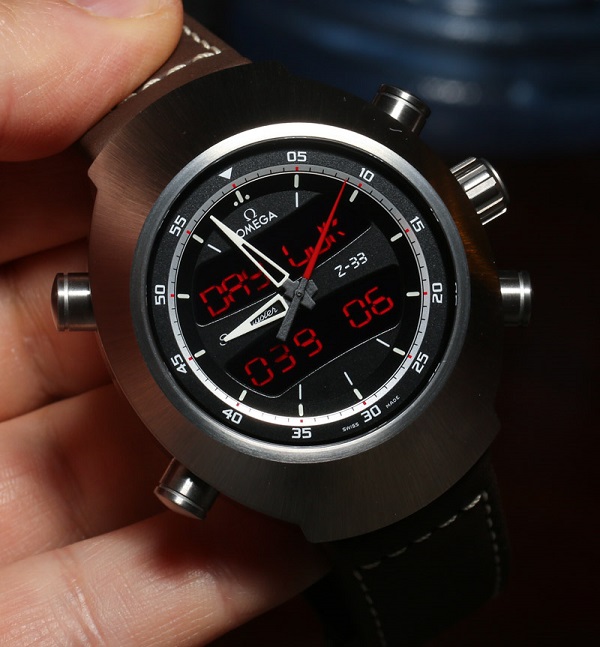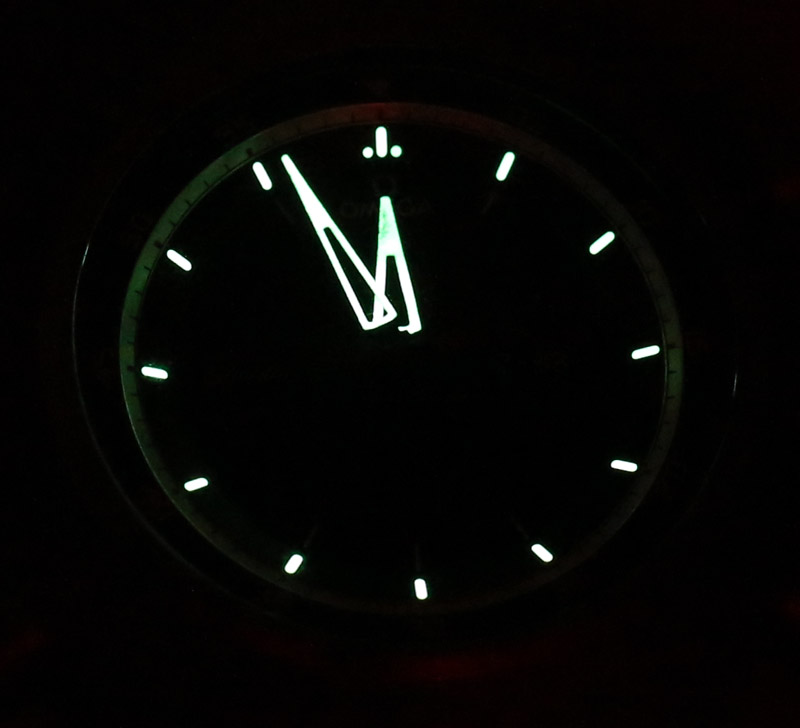
Speaking of the Omega Spacemaster Z-33 case, it is certainly peculiar looking and one of the more controversial elements of the design. Having said that, it isn’t new. Omega intentionally revived the case design of the historic 1969 Omega Flightmaster watch, which featured the exact same case (though not as thick). The case is quite wonderful once you get used to it, but I suppose not everyone can. I thought it was strange at first but it grew on me. Being made from titanium, the case is light, and the finishing is quite good as well as reminiscent of the finishing on the steel Flightmaster. At 43mm wide it isn’t too wide either, though it is a long watch (53mm tall). Omega further uses grade 5 titanium for the case, which is now pretty much standard on all their titanium watches. I only mention this as until a few years ago they mostly used grade 3 titanium for their titanium cased watches.
At launch Omega released the Z-33 on either a brown leather strap or a black rubber strap with Omega branding in red. Something felt missing though. And while the straps are nice, it just didn’t feel like a Spacemaster or true follow-up to the X-33 without a bracelet. The good news is that for 2013, Omega released a titanium bracelet for the Z-33, which again has a design based on the bracelet for the original Flightmaster. While I didn’t have the version with the bracelet for review, we were able to include an image of it in this review so you can see how sharp it looks. While no version of the Omega Spacemaster Z-33 is bad in our opinion, you pretty much want to get it on the bracelet. Though, the straps are comfortable and come with a nice fold-over deployant that allows for excess strap to be tucked in on the inside.
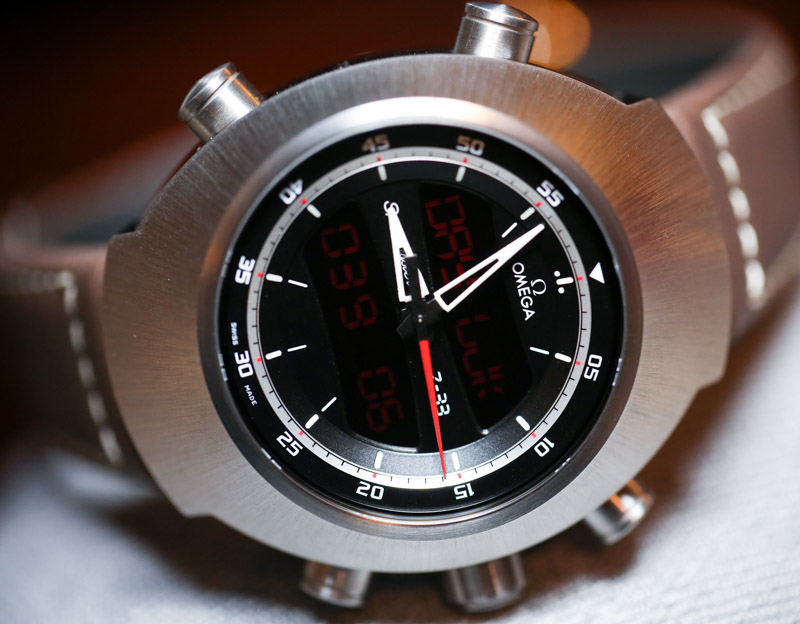
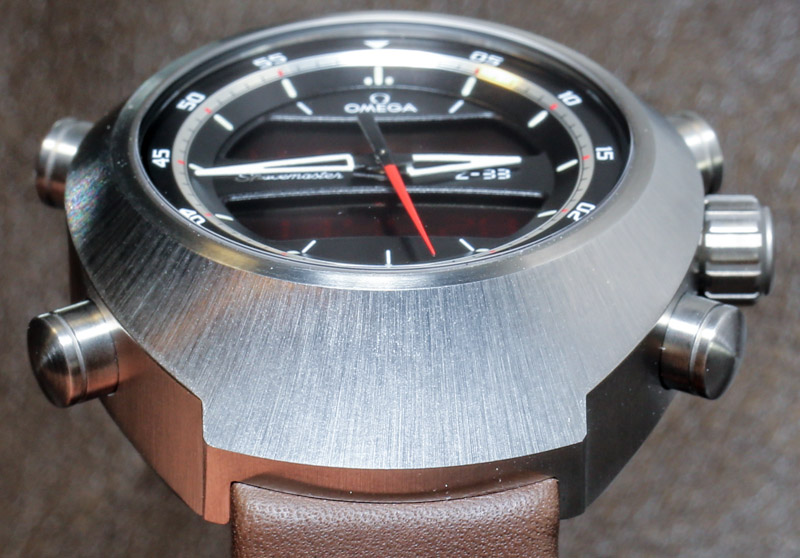
Omega even mimicked (to a degree) the pushers from the Flightmaster on the Z-33. Though, each is very useful on a watch with this many functions, it is important to add that these pushers have an excellent tactile experience. When pressing them in you get a distinct “click” to know that you have pressed them in enough to register something. This is important when operating the pushers without really glancing at the dial, or when using gloves. The titanium pushers are also large and hard to miss with your fingers. Plus, the crystal of course is AR coated sapphire, and the case is water resistant to 30 meters (certainly not a diving watch, but Omega offers enough of those).
While the dial of the Z-33 isn’t an analog of the Flightmaster, there are some similarities. Most notable is the minute scale around the bezel that looks like the inner rotating bezel of the Flightmaster. The thin, baton style hour markers are also a nod to the design of most Flightmaster watches. What I find particularly interesting is that aside from the progressive name (X-33 to Z-33) and functionality, there is nothing about the Z-33 that in any way points to the design of the X-33. Omega of course didn’t need to pander to the likes of X-33 lovers to make the Z-33 appealing, but I just find it interesting that the two watches, while technically cousins, have little in the way of familial similarities.
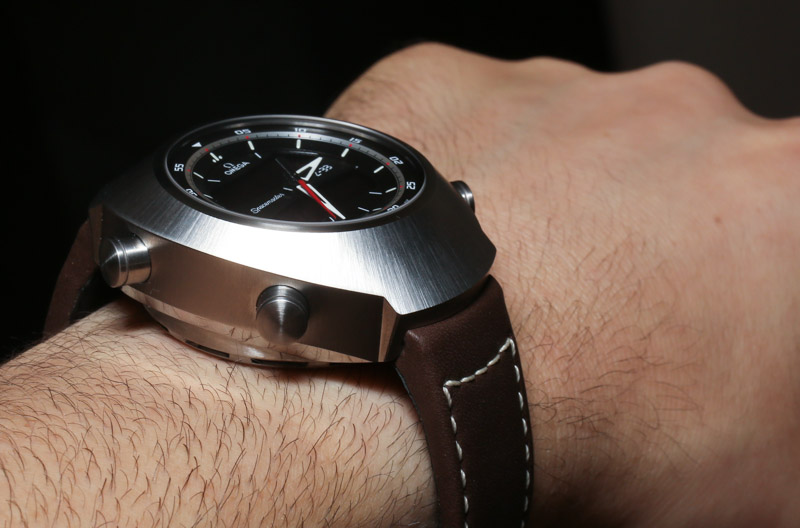
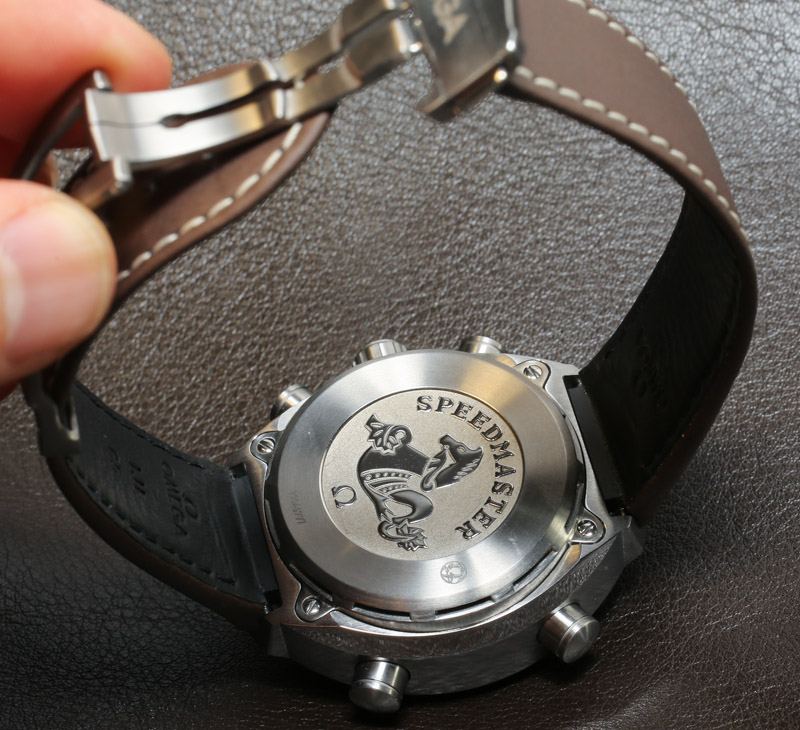
Now, let’s discuss the functionality of the Z-33 a bit. Some of the convenience features are clever, and after spending time with it, I found it so enjoyable to use I almost want it to be a smart watch. The responsive movement and features are so clear and straightforward that if Omega were to ever make a smart watch down the line, I think it would be a great move. Inside the Omega Spacemaster Z-33 is the Omega caliber 5666 multi-function, thermo-compensated quartz movement. Feature-wise, it is very similar to the SuperQuartz movements in Breitling Aerospace models. Having said that, all of these thermo-compensated quartz movements are produced by Swiss ETA. Thermo-compensated quartz movements deliver much better accuracy and longevity than standard quartz movements. They are accurate to about 10 seconds per year, whereas standard quartz movements are accurate to about 15 seconds per month.
The 5666 movement has three hands and two LCD screens. Note that the screens are attractively dark with red digits. The screens also have a backlight feature, of course, that seems to light up each time you operate the watch. Omega rates the movement as having a two year battery life which is acceptable and pretty standard… (more »)

